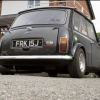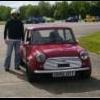1380 Lsd or not
#1

Posted 26 June 2006 - 09:35 PM
me and my mate are building a trackday/road car, its actually his car,his money im just helpig him build it!
he was thinking :1380,296 cam maybe 45 weber stage 4 head straight cut box 3,9 diff and lsd, but hes now thinking he could afford 7 port, so my question is how long will the engine last between rebuilds with 7port power? and will the Lsd be a *Female doggy* to handle on the road?
any advice please,
thanks in advance
#2

Posted 26 June 2006 - 10:58 PM
#3

Posted 27 June 2006 - 06:54 AM
why will lsd be a ***** on the road?LSD, yes will be a complete **** to handle on the road... you'd be better off spending your money on an ATB (Quaife) i you need a diff which is stronger than a normal x-pin diff.
#4

Posted 27 June 2006 - 07:06 AM
On a normal differential, when cornering one wheel may hardly rotate at all, whilst all the power is going to the outer wheel, which has to travel further to get around a corner. An LSD however will only let a preset amount of slip on the inner wheel, so it will still try to be turning when you don't necessarily need it to. It's all about getting the more power down to both wheels.
Sorry if that's really badly explained, but I know what I mean
Basically, it'll be harder to turn corners!
Oh and back to topic.
I am using a Tran-X cross pin diff (from our very own Guessworks) for my 1380. But I am not going down the 7-port route meself.
My engine spec is:
1380 with 286 cam and 1.5:1 roller rockers,
Stage 5/race head,
45 DCOE,
SCCR gearbox,
X-pin diff,
I am looking at around 110-120 BHP hopefully, but it aint finished yet
#5

Posted 27 June 2006 - 07:38 AM
There's a subtle difference in the power transfer through the different types of Diff.
When driving straight with traction to both wheels, power is transfered on a 50/50 basis.
With a std or x-pin diff, if a wheel looses traction, the power is transferred proportionally to the wheel with the LEAST traction, which basically means the wheel spins faster and you stop going forward. However, this means that when traction is good, and you are turning a corner, it allows the diff to spin freely when turning a corner..as the inner wheel needs to go round slower than the outer wheel.
An LSD combats this problem of spinning the free wheel by using friction plates to restrict the amount of power which is delivered. Excellent you may think, and yes in a competition environment where traction is paramount.... but when turning corners, because the inner wheel is not allowed to turn at the pace it wants to because of the friction plates there will be a tendany for the steering to be VERY heavy and difficult to turn.. ( unless you can go quick enough to unload the inner wheel, where it will then either spin or scrub ). At anytime power is transferred at best on a 50/50 basis to each wheel..
An ATB is a completely different design which uses wormgears in the hub of the diff to transfer power. The basics of this allow the diff to transfer power to the wheel with the MOST traction. This means that at worst 50% of the power is going to the driven wheel.. Because friction plates are not used, then the unloaded wheel, is able to turn at the required rate..
or something like that...
#6

Posted 27 June 2006 - 07:45 AM
#7

Posted 27 June 2006 - 07:47 AM
#8

Posted 27 June 2006 - 08:10 AM
#9

Posted 27 June 2006 - 08:34 AM
But in addition to the actual diff don't you have to buy a final drive and drive shafts? Gets expensive
#10

Posted 27 June 2006 - 08:50 AM
I thought I read somewhere about a Phantom or something like that. It was 2 metal plates with springs like valve springs between the plates to apply pressure to the face of the spider gears. The spring rate would then determine the load or amount of slip.
Or were they only for the M2.
#11

Posted 27 June 2006 - 09:45 AM
Yes they are available for the mini, but only from the US (Moss may do them), as you say it works on the principle of two plates and springs which replace the spacer in the diff, the single diff pin is retained ( weak point )...
The principle is that the output shafts are pushed against the diff cage and crownwheel, thus creating a friction surface ( the mica washers are redundant as they would just dissintegrate ), as a wheel starts to spin the grip is forced to turn, which then locks itself onto the diff pin, and binds to the planet gears. This slows down the turn of the wheel...
Scurvey ( after his little trip to the US ) has got his hands on something similar, and will be putting it through it's paces at the showdown... first running a std diff, and then with the device, doing relative comparisons on times ( especially over the first 16th and 1/8th distances )
Watch this space...
Edited by GuessWorks, 27 June 2006 - 09:49 AM.
#12

Posted 27 June 2006 - 10:21 AM
#13

Posted 27 June 2006 - 10:22 AM
#14

Posted 27 June 2006 - 10:27 AM
#15

Posted 27 June 2006 - 10:33 AM
Why do they work out cheaper? You still need the diff (£500) and final drive (£200) dont you. But do you need different drive shafts?
1 user(s) are reading this topic
0 members, 1 guests, 0 anonymous users


















